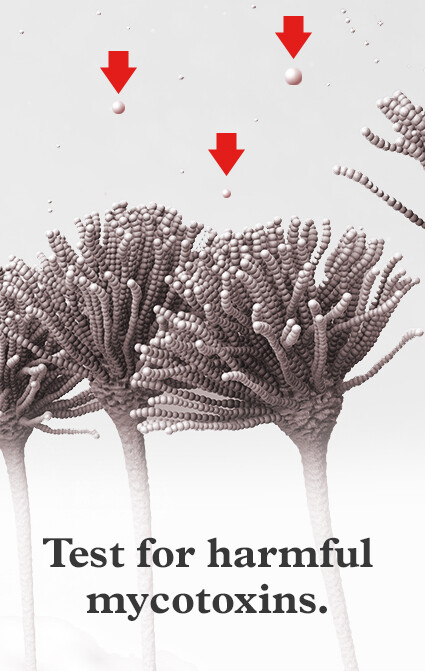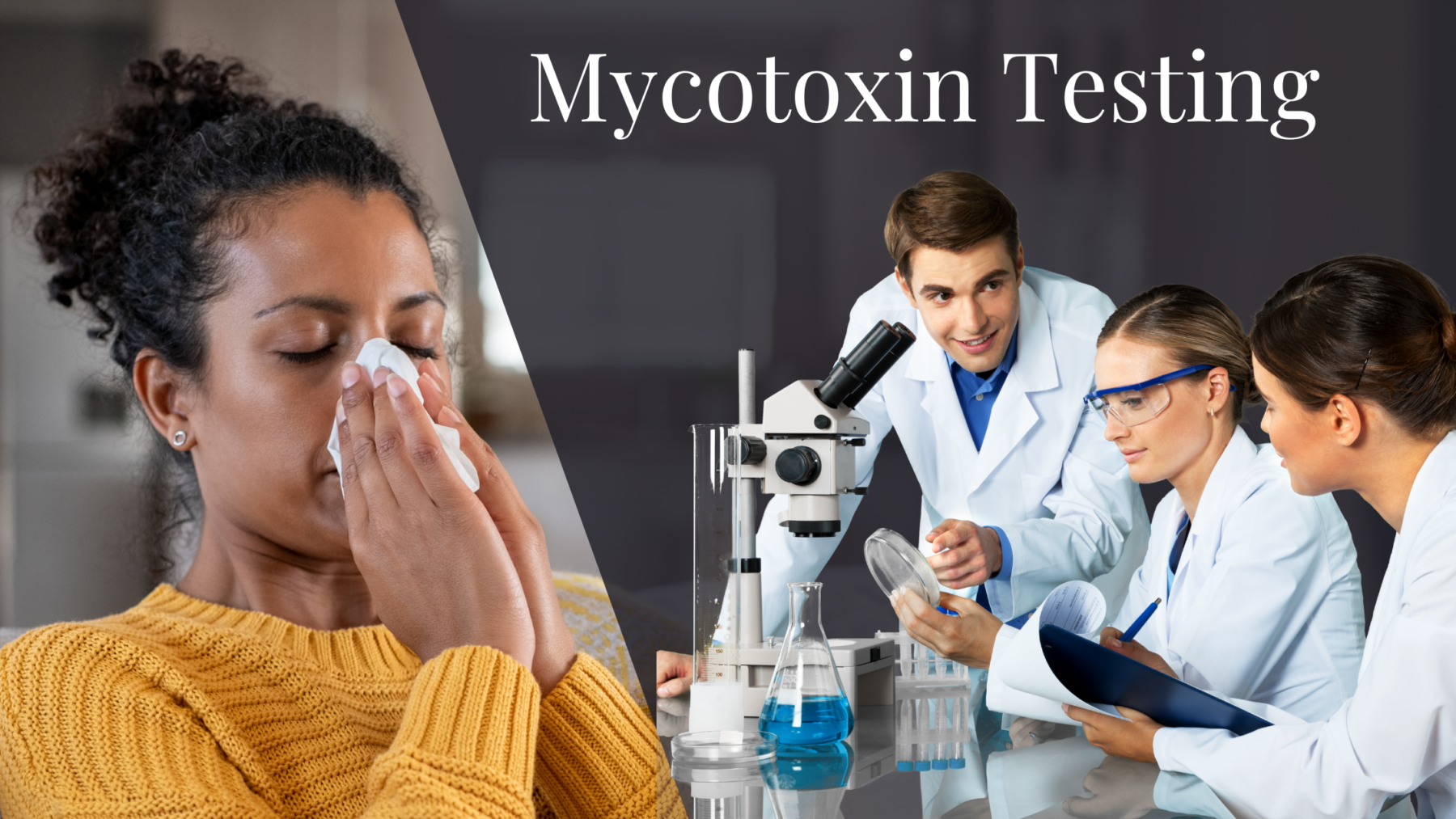Exactly How Mycotoxin Screening Aids Prevent Contamination and Secure Food Materials

Mycotoxin screening is a vital method in the food industry, serving as a frontline protection versus contamination by harmful toxins created by molds. With the application of sophisticated techniques like High-Performance Fluid Chromatography (HPLC) and Liquid Chromatography-Mass Spectrometry (LC-MS), food manufacturers can precisely measure and detect mycotoxin levels in farming items.
Recognizing Mycotoxins
Understanding mycotoxins starts with acknowledging that they are poisonous additional metabolites produced by specific mold and mildews, which can infect agricultural items. These metabolites are not essential for the development or recreation of the fungi however can have severe implications for animal and human health and wellness. Mycotoxins are typically located in staple crops such as corn, wheat, barley, and nuts, where they can multiply under details problems of wetness and temperature level.
There are a number of types of mycotoxins, each generated by various fungal types. Fusarium varieties create trichothecenes and fumonisins, both of which are linked with different severe and chronic wellness problems.

Risks of Mycotoxin Contamination
The risks of mycotoxin contamination are diverse, posturing substantial dangers to both food security and public wellness. Mycotoxins, toxic compounds produced by certain types of fungi, can contaminate a vast array of agricultural items including grains, nuts, spices, dried fruits, and coffee.
Economic influences are an additional significant problem. Infected crops can lead to considerable monetary losses for farmers and food producers as a result of lowered yields and the need for expensive purification procedures. Global trade can be considerably prevented as nations impose strict mycotoxin guidelines to protect their populaces, leading to turned down deliveries and strained trade relations.
Ecological factors such as environment change worsen the danger of mycotoxin contamination. Variations in temperature and moisture can develop desirable conditions for fungal growth, boosting the possibility of contamination events. Thus, understanding and minimizing these dangers are essential for making certain the safety and honesty of worldwide food materials.
Techniques of Mycotoxin Examining
Properly determining mycotoxin contamination in agricultural items is essential for securing public wellness and maintaining food security requirements. Numerous methods are utilized to discover and evaluate mycotoxins, each offering particular advantages and constraints.
High-Performance Liquid Chromatography (HPLC) is an extensively made use of method because of its high sensitivity and precision. It involves dividing mycotoxins from various other compounds in a sample, allowing exact metrology. Likewise, Fluid Chromatography-Mass Spectrometry (LC-MS) incorporates liquid chromatography with mass spectrometry to give in-depth molecular details, making it specifically useful for recognizing numerous mycotoxins concurrently - Mycotoxin testing Services.

Gas Chromatography-Mass Spectrometry (GC-MS) and Thin-Layer Chromatography (TENDER LOVING CARE) are also employed, each with special applications. GC-MS works for volatile mycotoxins, while tender loving care offers a simpler, cost-effective option for initial testing.
Benefits of Routine Testing
Routine testing for mycotoxins in farming items read supplies countless benefits, dramatically adding to public wellness and food security. By identifying contamination early, routine screening helps prevent the circulation of hazardous foods, thus lowering the danger of mycotoxin-related ailments among consumers. This positive technique not only safeguards human health and wellness but also improves the general high quality of food products.
Different countries and regions have actually established rigid restrictions for mycotoxin degrees in food and feed. Sticking to these restrictions with routine screening makes sure that suppliers and manufacturers meet lawful requirements, thereby preventing charges and profession barriers.
Furthermore, regular mycotoxin testing can bring about significant financial benefits. Early detection of contamination permits timely treatment, minimizing prospective losses from extensive contamination. Carrying out regular screening procedures can likewise minimize recall costs and related liabilities, which can be economically ravaging.
Furthermore, regular screening offers important data that can educate far better farming methods and storage conditions. By recognizing patterns of contamination, manufacturers can embrace safety nets, consequently minimizing future threats and adding to the sustainability of the food supply chain.
Executing Checking Protocols
Applying effective mycotoxin testing protocols is critical for ensuring the safety and high quality of agricultural products. Developing a durable testing framework includes multiple crucial steps, beginning with the identification of potential contamination points within the manufacturing and supply chain. This includes pre-harvest, post-harvest, storage space, and circulation phases. Each stage has to be inspected to determine where mycotoxin contamination is most likely to take place.
When critical control factors are identified, picking appropriate screening approaches is crucial. Common techniques include enzyme-linked immunosorbent assay (ELISA), high-performance fluid chromatography (HPLC), and mass spectrometry (MS) Each technique has its staminas and weak points; thus, picking the proper one depends upon the specific mycotoxin being tested, the required level of sensitivity, and readily available resources.

Lastly, integrating the testing protocols right into a thorough food safety and security administration system is advisable. This enhances traceability and allows speedy rehabilitative activities when contamination is found, consequently safeguarding the integrity of the food supply chain.
Final Thought
Mycotoxin screening is vital in stopping contamination and protecting food products by allowing early discovery of hazardous toxic substances produced by mold and mildews in informative post farming items. Regular testing enhances brand name reputation, monetary security, and trust in food safety by reducing contamination-related losses and keeping high criteria in food i thought about this manufacturing.
Mycotoxin testing is an important practice in the food sector, serving as a frontline protection against contamination by hazardous toxins produced by molds. An integrated strategy including farming techniques, storage management, and normal testing can mitigate the dangers associated with mycotoxin contamination, ensuring food safety and security and public health and wellness.
The risks of mycotoxin contamination are complex, posturing substantial risks to both food security and public health.Regular testing for mycotoxins in farming items supplies various advantages, substantially contributing to public health and food safety.Mycotoxin testing is essential in protecting against contamination and guarding food supplies by enabling very early discovery of hazardous toxic substances created by mold and mildews in farming items.